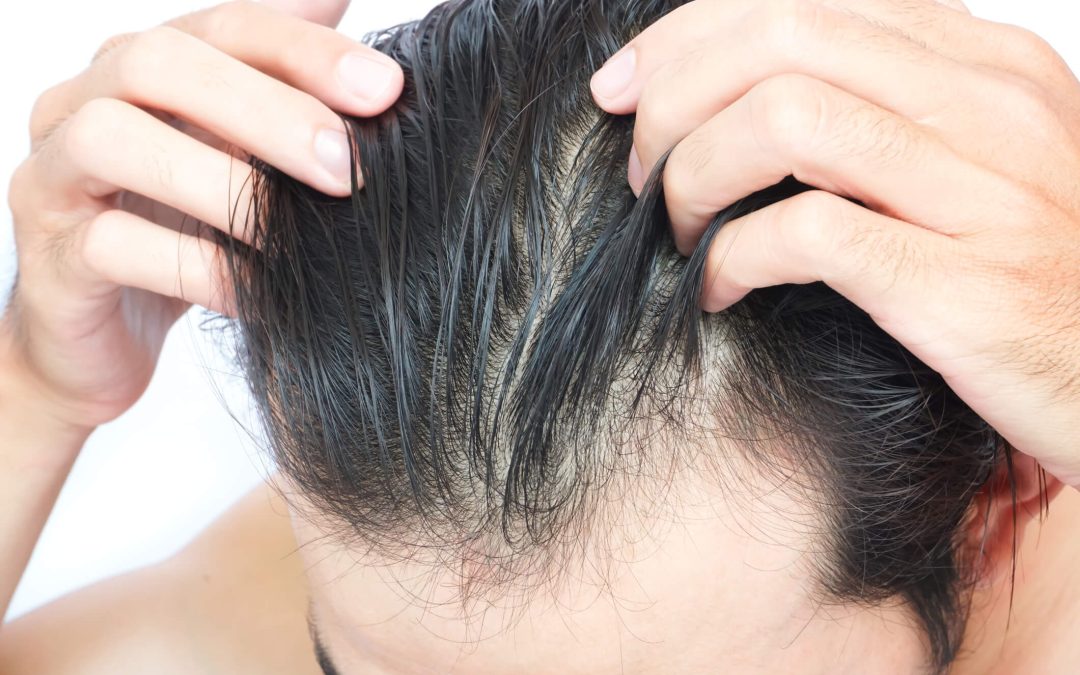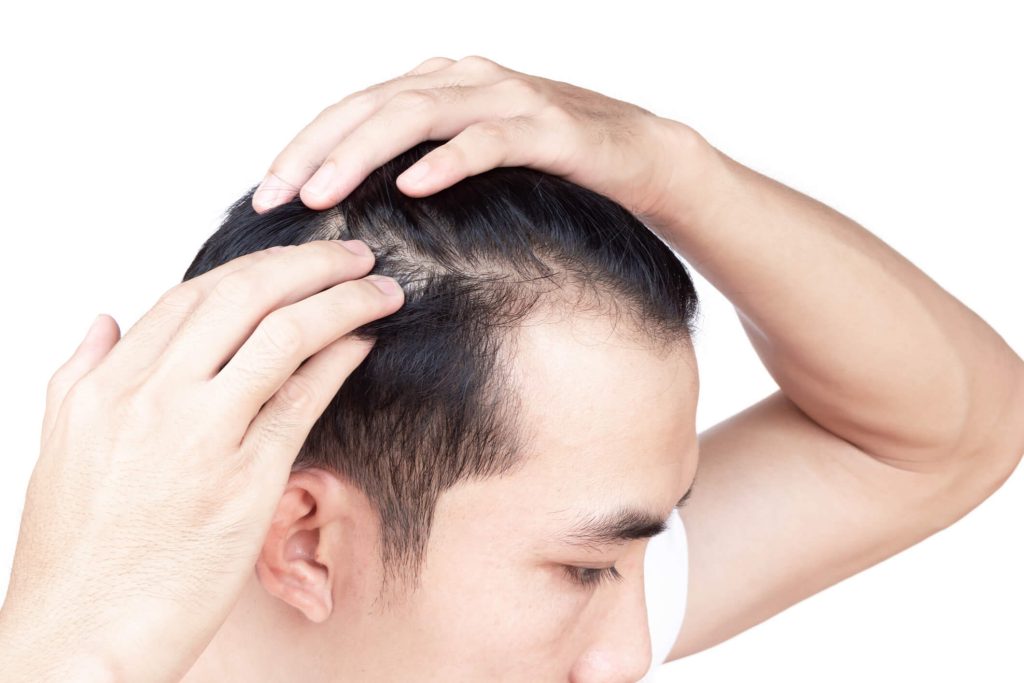Getting a hair transplant is the exciting first step to regaining your hair and confidence. But after you leave the clinic, the success of your surgery doesn’t stop. Proper aftercare is essential for your new hair follicles to flourish and achieve the best results. The proper care will help reduce redness, protect your scalp, and ensure proper sensation in the treated areas. We’ll guide you through the crucial hair transplant aftercare instructions, including managing the healing process, recommended hair products, and rest.
Following these steps will help your post-surgery routine work effectively, promoting hair regrowth and progress. With the proper care, your hair will grow in the right direction, and the results will be well worth the time you invest in your recovery. Whether you’ve had an FUE hair transplant or another method, following these guidelines will support hair regrowth in the treated areas, ensuring a successful outcome.
Follow Post-Procedure Instructions Carefully
Following your surgeon’s recommendations is the first and most crucial guideline for hair transplant aftercare. Depending on the method (FUE or FUT), each clinic may have somewhat different guidelines. However, typical instructions are as follows:
- Medications: To control pain, avoid infection, and lessen inflammation, take prescribed drugs as instructed.
- Shampooing: Use a mild, non-abrasive shampoo as recommended by your surgeon. Refrain from washing your hair the first few days after surgery to give the grafts time to settle.
- Avoid Scratching: The freshly transplanted follicles may become dislodged if you pluck or scratch your scalp.
Guard Your Scalp
Your scalp will be delicate and sensitive following a hair transplant. To safeguard your scalp and guarantee appropriate recovery:
- Sleep Position: Sleep with your head up to lessen swelling. Use pillows to support yourself and prevent applying pressure to your scalp.
- Steer clear of the sun: Direct sunlight may irritate your scalp and harm the young follicles. After your doctor gives the all-clear, wear sunscreen or a loose-fitting hat.
- Avoid Strenuous Activity: Avoid strenuous exercise or activities that make you perspire during the first few weeks since these can hinder healing and raise the risk of infection.
Prepare for the Shedding Process
During the initial weeks following the treatment, it is common for transplanted hair to be shed. This shedding is not a sign that the operation was ineffective because it is a standard component of the hair growth cycle. After a few months, new hair will start to develop in place of the hair follicles, which are now entering a resting phase.
Keep Your Scalp Environment Healthy
For the best possible hair development, a healthy scalp environment is necessary. Here are some tips for maintaining the healthiest possible scalp:
- Hydrate: Drink a lot of water to keep your scalp hydrated and encourage healing.
- Steer clear of alcohol and tobacco: These substances might affect circulation and impede the healing process.
- Nutrition: Consume a well-balanced diet full of vitamins and minerals, particularly those like zinc, vitamin D, and biotin, that promote healthy hair.
The Key Is Patience
Following a transplant, hair growth takes time. Three to four months following the treatment, the transplanted hair will begin to grow, and the complete results may not be seen for up to a year. It’s crucial to exercise patience throughout this period and refrain from worrying about the procedure. Your development will be tracked with the help of routine follow-up sessions with your surgeon.
Steer Clear of Chemical Treatments
It’s advised to avoid chemical treatments like hair dye, perms, and straightening procedures during the first several months following your hair transplant. These may aggravate your scalp, cause irritation, or disrupt the healing process, including the formation of crusts. Making these changes too soon can prevent your scalp from healing properly. You can start these treatments again as soon as your surgeon gives the all-clear, ensuring that your hair is fully healed and ready for any additional treatments.
Consider Scalp Micropigmentation (SMP) for Enhanced Results
Following a hair transplant, some patients choose Scalp Micropigmentation (SMP) as an additional treatment. SMP increases the density of the transplanted area by placing microscopic spots of pigment on the scalp that resemble hair follicles. Before making any decisions, gathering information about the procedure and understanding the potential benefits and risks is essential. Your surgeon can provide valuable guidance on whether SMP is right based on your experience and needs. Additionally, they may recommend using certain creams or antibiotics to ensure proper healing before considering SMP as something to enhance your results.
Long-Term Hair Care Tips
Long-term maintenance of healthy hair after investing in a hair transplant is crucial to preserving your results and encouraging further growth. Maintaining firm, glossy, and full hair requires good hair care, even if you did not have a transplant.
Establish a Gentle Hair Care Schedule
A moderate hair care regimen is the first step toward long-term hair health. Excessive styling and harsh treatments can cause damage, thinning, and breaking. Here’s how to take care of your hair safely:
- Reduce the Frequency of Shampooing: Too much shampooing might deplete your hair’s natural oils. Depending on your hair type and lifestyle, try shampooing your hair twice to thrice weekly.
- Make Use of Gentle, Sulfate-Free Items: Select shampoos and conditioners devoid of harsh chemicals such as parabens and sulfates. Over time, these substances may cause your hair and scalp to become parched.
- Maintain a Regular Condition: Conditioning aids in damage prevention and moisture maintenance. Apply a conditioner that is appropriate for your hair type, paying particular attention to the ends, which are typically drier.
Maintain the Health of Your Scalp
Healthy hair starts with a healthy scalp. Long-term hair development depends on caring for your scalp, just as you would with your skin. Here are some pointers:
- Scalp massages: Gently massage your scalp with a scalp massager or fingertips to encourage hair development and enhance blood circulation.
- Scrub Your Scalp: Consider a mild exfoliation or scalp scrub every few weeks to remove product buildup and dead skin cells. This may keep your hair follicles clear and promote new hair growth.
- Hydrate your scalp: A flaky, dry scalp might prevent hair from growing. Use a nourishing oil or treatment (such as jojoba or argan oil) to keep your scalp hydrated.
Guard Against Chemical and Heat Damage to Your Hair
Chemical treatments and excessive heat can weaken your hair, causing breakage and thinning. Here’s how to keep your hair safe:
- Reduce Heat Styling: Use as few curling irons, straighteners, and hair dryers as possible. If you must, always use a heat protectant spray before using them.
- Choose Air Drying: Let your hair air dry whenever you can. This helps preserve the hair’s natural texture and lowers the chance of heat damage.
- Steer clear of harsh chemicals: Restrict your usage of chemical hair coloring, relaxers, and perms. Use ammonia-free dyes, and always get deep conditioning treatments after coloring your hair.
Regularly Trim
Regular haircuts are necessary to keep your hair healthy, even if you’re growing it out. Breakage and broken ends may impede growth, which can be avoided with trimming. Depending on your hair type and length, get a haircut every 6 to 8 weeks.
Adopt a Diet Good for Your Hair
Your hair’s health is directly impacted by what you consume in your body. A nutrient-rich diet can encourage more vigorous, glossier, and healthier hair. Pay attention to foods high in the following nutrients:
- Protein: Keratin is a type of protein that makes up hair. Eat protein-rich foods, such as fish, poultry, eggs, tofu, and beans, to nourish your hair.
- Vitamins and Minerals: For healthy hair development, vitamins like biotin, vitamin E, and vitamin D, as well as minerals like iron and zinc, are necessary. Include fruits, nuts, seeds, and leafy greens in your diet.
- Omega-3 Fatty Acids: These fatty acids support hair growth and maintain a healthy scalp. They are abundant in foods such as walnuts, flaxseeds, and salmon.
Steer Clear of Tight Hairstyles
Wearing tight ponytails, braids, or buns regularly can cause undue stress on your hair and scalp, even though some hairstyles appear adorable. Tension-induced hair loss, known as traction alopecia, may result from this. After a hair transplant, avoiding hairstyles that stress the hairline is essential. Using a headband or cap may seem like a good idea, but be cautious as they can cause sweating or irritation. Avoid anything that could pressure your scalp, such as pulling your hair back too tightly. If you need to touch your hair, always use a gentle hand, and be mindful of how you care for your scalp. Keep your eyes on your recovery, and avoid any actions that could lead to bleeding or irritation.
Pay Attention to Stress
Because chronic stress interferes with the natural cycle of hair growth, it can cause hair loss. Stress management is crucial for both your general well-being and your hair. Consider the following stress-relieving activities:
- Exercise: Regular work out improves circulation, lowers stress levels, and supports general health, including healthier hair.
- Meditation and Yoga: Yoga and meditation are two techniques that can improve hair health by lowering stress and calming the mind.
- Sufficient Sleep: Make sure you’re sleeping enough every night. Sleep is necessary for healing and preserving hormonal equilibrium, impacting hair development.
Take Supplements into Account
Consider taking supplements made specifically for hair health if your diet is deficient in particular vitamins and minerals or if you want to give your hair an extra boost. Omega-3 fatty acids, collagen, and biotin are common ingredients that support hair growth. Surgeons may sometimes recommend supplements as part of a comprehensive solution alongside hair transplant surgery. If you’re experiencing itching or other discomfort after a hair transplantation procedure, supplements may help improve the overall condition of your hair and scalp. Always get your doctor’s approval before beginning a new supplement regimen, as they can guide you in choosing the right kind for your needs. Remember, handling your hair with care is essential, and avoiding doing things that could cause damage, such as scratching or using harsh products. This way, you can ensure that you’re giving your hair the best chance to grow and stay healthy.
Drink Plenty of Water
Keeping your hair healthy requires drinking enough water. Adequate hydration helps prevent dryness and brittleness by hydrating your hair and scalp. If you’re the kind of person who sweats a lot, especially after a shower or workout, it’s even more important to stay hydrated to maintain healthy hair. Drinking water helps flush out toxins and supports the production of natural oils that nourish your hair. To keep your hair looking its best, drink eight glasses of water or more each day, and remember that hydration is key to preventing issues like dry scalp and split ends.
Employ the Proper Hair Tools
Your hair’s health can be significantly impacted by the equipment you use to style it. Choose soft, high-quality tools like:
- Wide-Toothed Comb: A wide-toothed comb minimizes breakage and is kinder to damp hair.
- Soft Bristle Brush: A soft bristle brush helps disperse natural oils without harming your hair.
- Microfiber Towel: To minimize friction and avoid frizz, gently blot away extra water from your hair using a microfiber towel rather than rubbing it with a conventional towel.
Conclusion
Hair transplant aftercare is essential for successful treatment and producing long-lasting, natural-looking results. Following your surgeon’s guidance is crucial, as it helps protect your scalp from infections and irritation. It’s essential to be mindful of potential side effects and any concerns arising during recovery. Using the right hair care products, such as gentle shampoos and moisturizers, can help promote healing and reduce irritation.
Additionally, taking precautions against sun exposure and wearing a bandage or hat for protection can shield your scalp from harmful UV rays. Managing your blood pressure and avoiding strenuous activities will also support your recovery. Remember, this journey is an investment in your appearance, and your choice to follow the proper aftercare routine will make a significant difference in the regrowth and quality of your hair. Whether it’s your beard or scalp, consistency and care throughout the recovery process are key to achieving the desired results. Exercise patience and trust in the process to ensure the best possible outcome.
Frequently Asked Questions
How can I determine the success of my hair transplant?
The density and development of the transplanted hair can be used to gauge the success of your hair transplant. New hair growth should show after three to four months, and the complete effects should be apparent by twelve to eighteen months. To evaluate the procedure’s success, your surgeon will also monitor your development at follow-up appointments.
Can I receive a hair transplant if I have psoriasis or dandruff on my scalp?
It’s crucial to discuss any pre-existing scalp conditions you may have with your surgeon during the appointment, such as psoriasis, seborrheic dermatitis, or dandruff. Certain conditions must be treated before the transplant to guarantee the best possible healing and hair development.
After a hair transplant, is it typical for the scalp to feel numb?
Following a hair transplant, it’s normal to have temporary numbness or tingling on the scalp, particularly in the vicinity of the donor and transplant sites. As the nerves heal, this feeling usually goes away in a few weeks to a few months.
After the transplant, would I need to take any drugs to promote hair growth?
In certain situations, your surgeon might suggest drugs like finasteride (Propecia) or minoxidil (Rogaine) to promote hair growth and stop additional hair loss. Though not necessarily required for all patients, these drugs can significantly enhance outcomes.
If there is a family history of hair loss, can I still have a hair transplant?
People with a history of hair loss may benefit from hair transplants. It is crucial to visit a skilled surgeon to determine the extent of your hair loss, the quality of your hair, and the state of your scalp. The most outstanding candidates are those with enough donor hair to get natural results.
Is the initial appearance of the transplanted hair normal?
Indeed, it’s common for transplanted hair to seem uneven or thin in the initial months following treatment. Over time, the hair will progressively get fuller and thicker as the follicles respond and new hair develops.
After a hair transplant, is it okay for me to use pain medication?
Following a hair transplant, a little discomfort is typical, and your surgeon may recommend over-the-counter pain medications like ibuprofen or prescribe pain medication. Never take more medication than is recommended, and stay away from drugs that could impede healing or lead to problems.
What are some ways to lessen the possibility of scarring following a hair transplant?
Pay close attention to your surgeon’s post-operative care instructions to reduce scarring. Use any topical medications as directed, avoid picking at scabs, and protect your scalp from harsh chemicals and excessive sunlight. Follicle unit extraction, or FUE, usually leaves minimal scarring, but it’s crucial to care for yourself properly afterward.
After a hair transplant, is it safe to exercise?
For at least two weeks following your hair transplant, you should refrain from strenuous exercise and activities that make you perspire. Light walking is generally acceptable, but until your surgeon gives the all-clear, you should refrain from intense exercises like swimming, weightlifting, or running.
How should the donor area be maintained following a hair transplant?
Care must also be taken of the donor area, where the hair follicles were taken. Do not irritate or scratch the area. Apply topical treatments as your surgeon directs and wash with a mild shampoo. The donor region will recover within a few weeks, but caution is advised.
Understanding the Importance of Hair Transplant Aftercare
A hair transplant can change a person’s life by giving them more whole, natural-looking hair. However, the journey doesn’t end after the procedure. Proper aftercare is crucial for the transplanted hair follicles to settle and grow as planned. Following your hair transplant surgeon’s instructions can lower the risk of complications and speed up the healing process. Adhering to these guidelines will ensure your hair restoration journey is as successful as possible.
Your scalp will be sensitive after the operation, so avoiding activities that could impede healing is essential. During the first few days, you must cover and clean your scalp, careful not to touch or scratch the transplanted region. Avoid washing your hair vigorously or exposing your scalp to the sun. While some soreness and swelling are normal, they usually disappear within a few days. Managing “shock loss,” or the temporary shedding of transplanted hair, is also a typical part of the hair growth cycle, so patience is key.
Concern over the recovery process is common for both women and men. To support the healing process, it’s important to pay attention to blood flow and your sleeping position to avoid pressure on the scalp. Refrain from smoking and be cautious with your hands to avoid disturbing the transplanted area. Scabbing is also a normal part of the recovery, but it’s important not to pick at it. If you notice any unusual symptoms, don’t hesitate to contact your surgeon for guidance.
Neograft Hair Restoration Orange County understands how intimidating the recovery process can be. We offer personalized aftercare advice to ensure the best possible results for each patient. Our team will support you at every stage, from post-operative care to gentle washing techniques. Contact us today for a consultation, and we will help you achieve the hair you’ve always desired with the proper maintenance and care.




Recent Comments